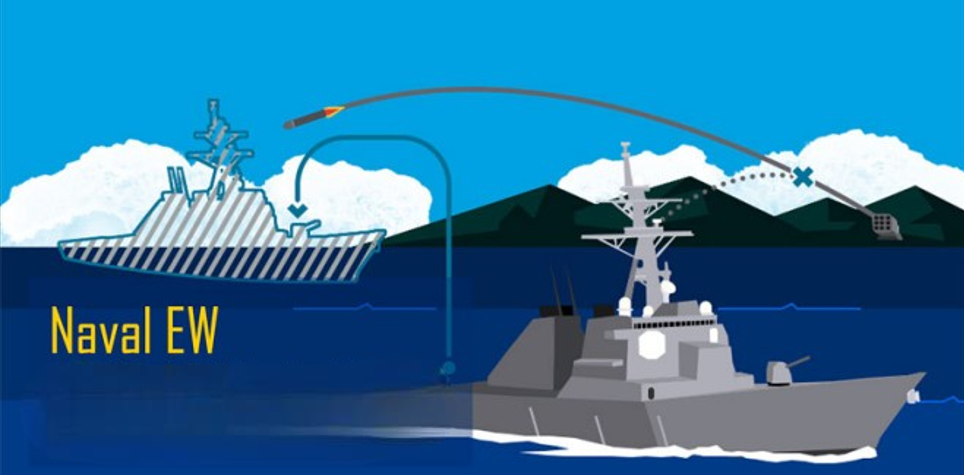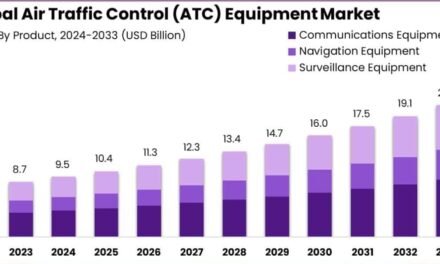Electronic Warfare (EW) systems are a critical component of modern naval defense, enabling ships and fleets to detect, deny, disrupt, or exploit the electromagnetic spectrum to gain a tactical advantage. These systems enhance situational awareness, protect naval assets, and neutralize enemy threats in complex and contested environments. Here’s the significance of EW systems in naval defense:
1. Core Functions of Naval EW Systems
Naval EW systems are categorized into three primary functions:
A. Electronic Support (ES)
- Purpose: Gather intelligence and enhance situational awareness by intercepting and analyzing enemy electromagnetic signals.
- Role:
- Detect and classify radar, communication, and electronic emissions from enemy ships, aircraft, and submarines.
- Provide early warning of threats such as incoming missiles or targeting systems.
- Example:
- The U.S. Navy’s AN/SLQ-32(V)6 SEWIP gathers and analyzes electronic signals to detect potential threats.
B. Electronic Attack (EA)
- Purpose: Disrupt or degrade enemy systems using electromagnetic energy or cyber capabilities.
- Role:
- Jam enemy radars to blind their targeting systems.
- Deploy decoys or false signals to confuse adversary sensors and weapons.
- Example:
- Nulka Active Decoy: A hovering decoy that emits radar signals to mislead enemy missiles.
C. Electronic Protection (EP)
- Purpose: Safeguard a ship’s own electronic systems from enemy EW and cyberattacks.
- Role:
- Shield radars, communication systems, and sensors from jamming or spoofing.
- Implement countermeasures to maintain functionality under electronic attack.
- Example:
- Aegis Combat System incorporates robust EP measures to ensure operational integrity during electronic warfare.
2. Strategic Importance of EW in Naval Defense
A. Enhancing Situational Awareness
- EW systems provide real-time intelligence on enemy positions, capabilities, and intentions.
- Early detection of threats, such as targeting radars or missile launches, enables proactive defense measures.
B. Force Protection
- Protects naval assets, such as aircraft carriers and amphibious assault ships, from missile attacks, radar-guided weapons, and other threats.
- Example: The AN/SLQ-32 EW Suite provides comprehensive protection against anti-ship missiles.
C. Asymmetric Advantage
- Allows smaller or less technologically advanced navies to counter superior adversaries by exploiting vulnerabilities in their electronic systems.
3. Applications of EW in Naval Defense
A. Countering Anti-Ship Missiles
- EW systems can jam or deceive the radar and infrared guidance systems of incoming missiles.
- Example:
- Soft-Kill Measures: Systems like Sea Gnat deploy chaff or flares to create false targets for radar or heat-seeking missiles.
- Hard-Kill Measures: Complement EW with kinetic defenses, such as Close-In Weapon Systems (CIWS).
B. Suppression of Enemy Air Defenses (SEAD)
- Disrupts enemy air defense radars to protect naval aircraft during strike missions.
C. Protecting Communication Networks
- Maintains secure and reliable communication by countering enemy jamming or interception attempts.
- Example: Frequency hopping ensures uninterrupted communications by rapidly switching frequencies.
D. Supporting Multi-Domain Operations
- Integrates with space, air, and land-based EW assets to create a unified, multi-domain defense strategy.
4. Advanced Technologies in Naval EW
A. Artificial Intelligence (AI)
- AI-driven EW systems can analyze large volumes of signal data in real-time to identify patterns, classify threats, and suggest countermeasures.
- Example: AI-enhanced threat classification in SEWIP Block 3 systems.
B. Cognitive EW
- Adapts to dynamic electronic environments by learning and countering new threats autonomously.
C. Directed Energy Weapons (DEWs)
- DEWs, such as high-power lasers and microwave systems, can disrupt or destroy enemy electronics without kinetic engagement.
D. Cyber-EW Integration
- Combines electronic warfare with cyber capabilities to disrupt or exploit enemy networks and communication systems.
E. Low Probability of Intercept (LPI) Systems
- LPI radars and communications are designed to evade detection by enemy EW systems, ensuring operational stealth.
5. Challenges in Naval EW
A. Electromagnetic Spectrum Congestion
- Increasing reliance on the spectrum for communications, radar, and sensors creates competition and potential interference.
B. Advancements in Counter-EW
- Adversaries develop countermeasures to resist jamming or deception, requiring continuous innovation in EW capabilities.
C. Cybersecurity Risks
- Integration of digital systems in EW increases vulnerability to cyberattacks.
D. Complex Operating Environments
- Littoral zones with dense urban and maritime activity can complicate signal detection and classification.
6. Examples of Naval EW Systems
- AN/SLQ-32 (SEWIP) (U.S.):
- A modular electronic warfare suite for surface ships, providing ES, EA, and EP capabilities.
- Nulka Active Decoy System (Australia/U.S.):
- A hovering decoy that emits signals to divert radar-guided missiles.
- Krasukha EW System (Russia):
- Known for its ability to jam radar and satellite communications.
- Scorpius-N (Israel):
- Advanced EW system capable of targeting multiple threats across different domains simultaneously.
7. Future Trends in Naval EW
A. Enhanced Autonomy
- Autonomous EW systems that require minimal human intervention and adapt to emerging threats dynamically.
B. Integration with Hypersonic Defense
- EW systems capable of countering the advanced guidance and communication systems of hypersonic weapons.
C. Multi-Domain Interoperability
- Seamless integration of EW with air, land, space, and cyber domains for coordinated defense operations.
D. Quantum EW
- Exploration of quantum technologies for secure communications and advanced signal processing.
Conclusion
Electronic warfare systems are indispensable in modern naval defense, providing the ability to dominate the electromagnetic spectrum and counter increasingly sophisticated threats. By enhancing situational awareness, protecting naval assets, and disrupting adversary operations, EW ensures operational superiority in complex and contested environments. As technology advances, EW will remain a cornerstone of naval strategy, evolving to meet the challenges of emerging threats and multidomain warfare.
Hashtags
#ElectronicWarfare #NavalEWSystems #EWInNavalDefense #AdvancedNavalDefenseTech #ThreatDetectionTech #ElectronicCountermeasures #AntiRadarSystems #NextGenEWTech #AIInElectronicWarfare #SmartEWSystems #RadarJamming #CommsInterference #NavalRadarDisruption #SecureNavalComms #IntegratedNavalDefense #FutureOfNavalEW #GlobalNavalSecurity













